Back in September of 2015, I wrote a review for Black Sheep Warrior on the Dawson Ranger (Click here to read the review). That was the first of many Dawson knives that I would review (with several still in the works) and an impressive piece of steel it was. Well, it only makes sense that a fine workhorse knife like the Ranger would have a big brother. That big brother is the Scorpion.
The Dawson Scorpion is an up-scaled version of the Ranger with a 6” blade as opposed to the Ranger’s 5” blade. The Scorpion stretches out to 11.5” in overall length, which is 1 5/8” longer than its little brother. Like the Ranger, the Scorpion is a full-tang knife made out of ¼” 5160 high carbon alloy steel and finished off with a Cerakote™ finish and texturized Micarta™ handle scales. The knife handle also incorporates Dawson’s locking detent system, which allows the knife to lock securely into its Kydex™ sheath, requiring active disengagement by the user.
Like every other knife that John Roy from Dawson Knives has sent to me, he asked me to try to break it. It is actually kind of eerie when someone hands you a beautiful $500 knife and says, “Try to break it.” My best response is always, “I’ll see what I can do.” So I set out beat up another Dawson knife. After torture testing three other Dawson knives, I’m proud to say that I finally managed to accomplish my task of breaking one of their knives. Ultimately, however, this knife took a bigger chunk out of me than I did out of it. (More on both of these points later.) My torture testing can be seen in the video below.
I started out my testing with some war post work on a large dead tree. War post training involves training involves using a live blade against a wooden post or tree to practice cutting and thrusting movements with the blade. This type of training is very beneficial to the practitioner, as it develops power, accuracy, timing, and strength. It is essentially heavy bag training for a knife. The problem is it is also very hard on a blade and requires that you high-quality, durable blade; otherwise you run the risk of breaking the blade and the potential for injury. Because of my experience with Dawson knives, I had no second thoughts of working the post and the Scorpion performed beautifully.
I then went on to some throwing. I DO NOT advise throwing a knife that is not specifically made for throwing. Throwing a knife generates a LOT of force on the blade, which is why throwing knives are hardened to a lower Rockwell C Hardness to make them tough and springy. I like to use throwing for my torture testing because it allows me to see how tough the knife is. Dawson’s differential treating gives their knives a flexible spine with a hardened edge, so their blades hold up quite well to throwing.
It was in this throwing portion that I managed to break the Scorpion. Well, actually, I broke a small piece off of one of the Micarta™ handle scales when the knife the knife struck by the handle. The blade itself held up just fine, even after roughly 30 throws. Dawson will replace the handle for the cost of shipping.
Next I did some chopping on a large piece of palo verde wood. The knife chopped away at the wood like a champ. The larger blade made it quite a bit easier to chop with than its smaller Ranger brother. With that same piece of wood, I did some levering with the tip to see how well the tip would hold up. There was no visible damage to bevel or the tip. I finished up by breaking a brick with the pommel, despite the broken handle section.
I mentioned in passing that this knife took a bigger chunk out of me than I did out of it. I got a little bit careless early on in the testing process (The video shown here was actually my “second attempt” at testing the knife.) I chopped through a two-inch piece of mesquite and was doing some batoning to split the wood. While holding a piece of wood at the base with my right hand, I attempted to set the knife into the wood by hacking it into the top with my left hand. I ended up glancing off the top and the blade slide down the side and struck the large knuckles of my index finger and thumb. I looked down and saw bone and an instant pool of blood. After seven stitches and eight weeks, I’m still trying to recover full strength and function of my index finger. I share this with the readers because it was a stupid mistake that never should have happened. Had this been a survival scenario, I would have found myself in a severely bad situation. So whenever you are batoning wood, press the blade into the wood and tap it in to set it. DO NOT hack or chop it in.
Every Dawson knife is proudly hand-made in the USA by members of the Dawson family. They take great pride in their work, which is why they guarantee their knives for life. Worried that your expensive Dawson knife might get a little worn if you use it? Not a problem. Send it to Dawson and they will recondition it free of charge. If somehow your knife gets run over by a tank and breaks beyond repair, they will replace it for a small fee. I have personally seen some of the Dawson knives that have been reconditioned after I did everything I could to destroy them, and I couldn’t tell them apart from their brand new knives. That type of service and quality control makes every dime you spend on a Dawson worth the investment.
The Scorpion can be purchased directly from Dawson Knives at www.dawsonknives.com for $425.00. Of course, if you are a loyal Dawson customer then you know that Dawson takes care of the faithful and returning customers get some sort of discount. Click here to go directly to the Scorpion in the Dawson Web Store. If you are social media type, then make sure to follow Dawson on Instagram and Like them on Facebook.
Stay bladed my friends.
Photo Credits: Chad McBroom

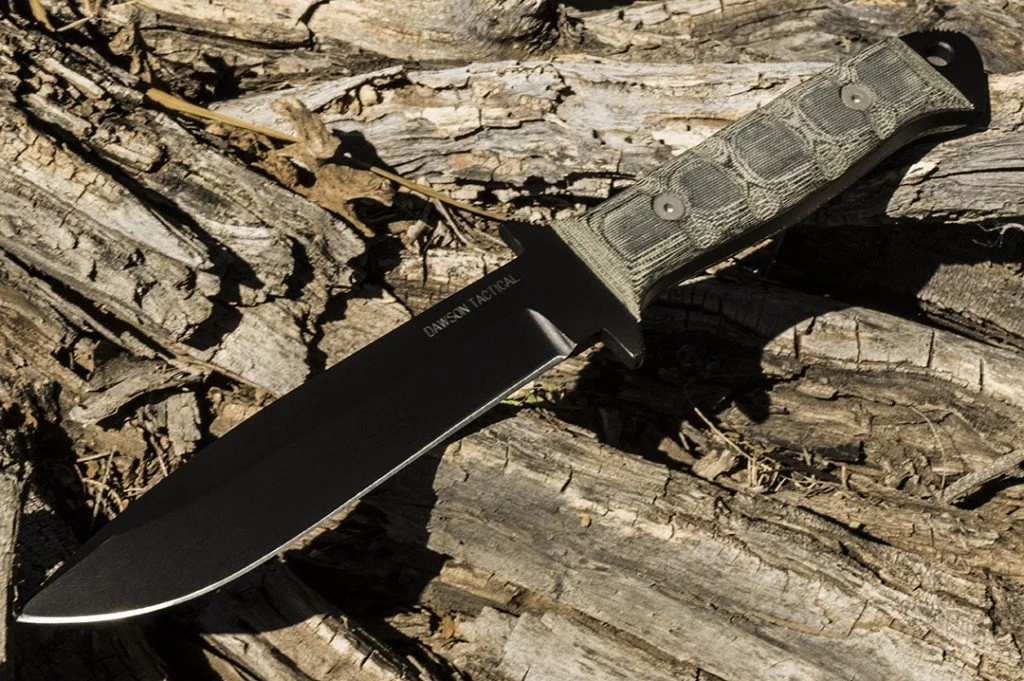
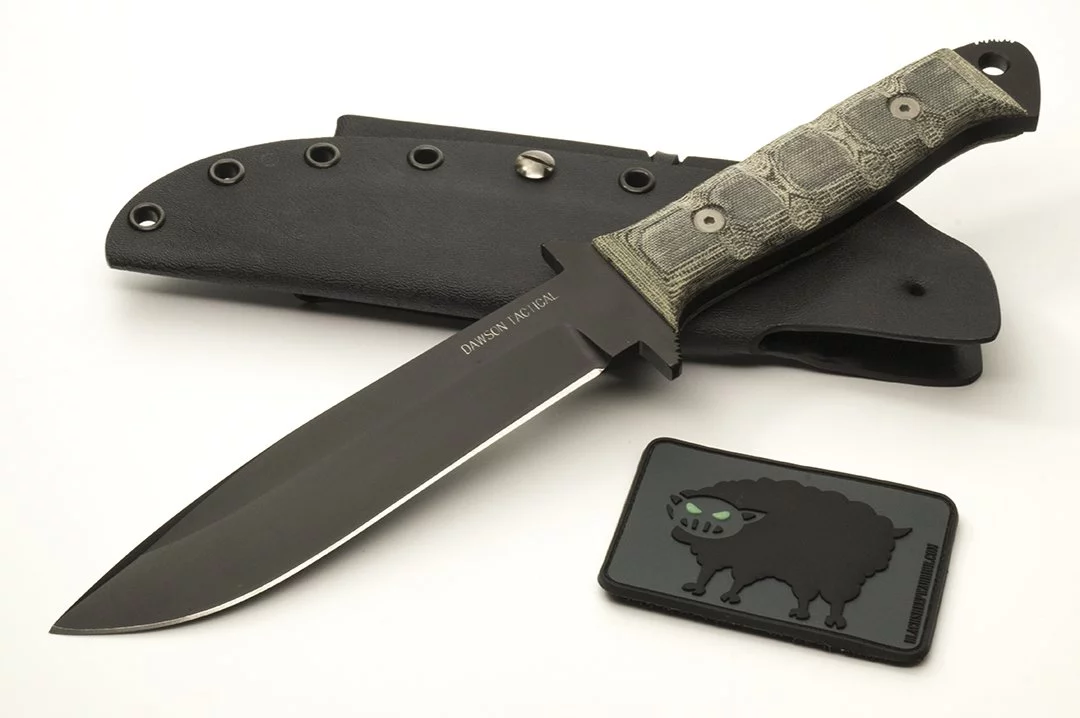
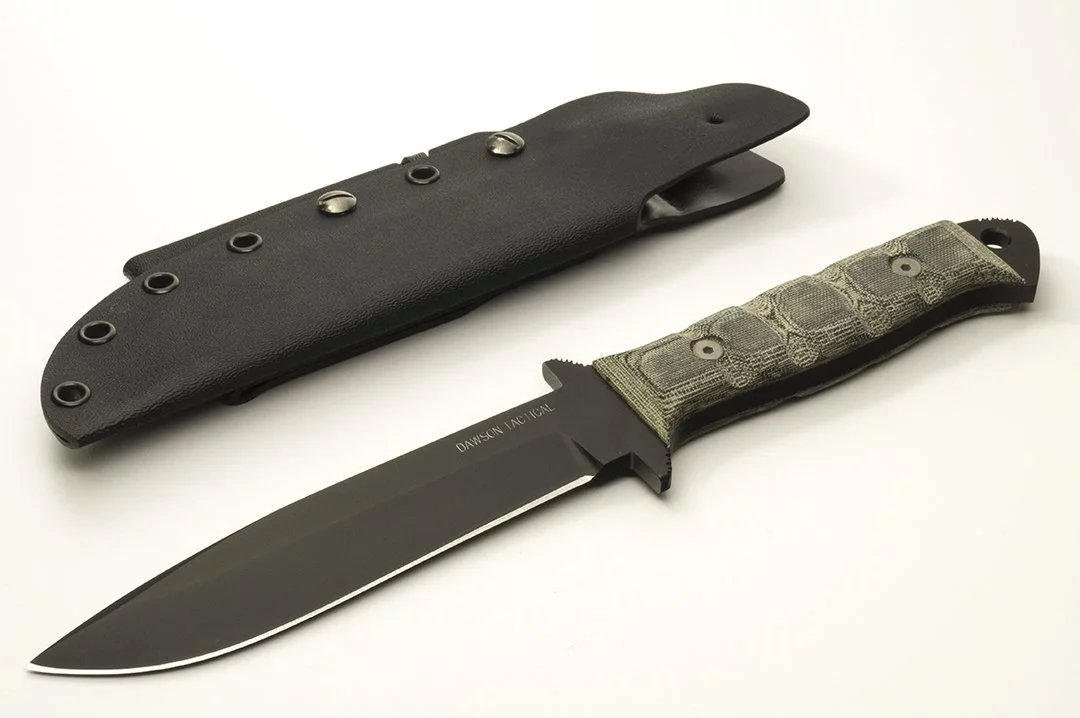



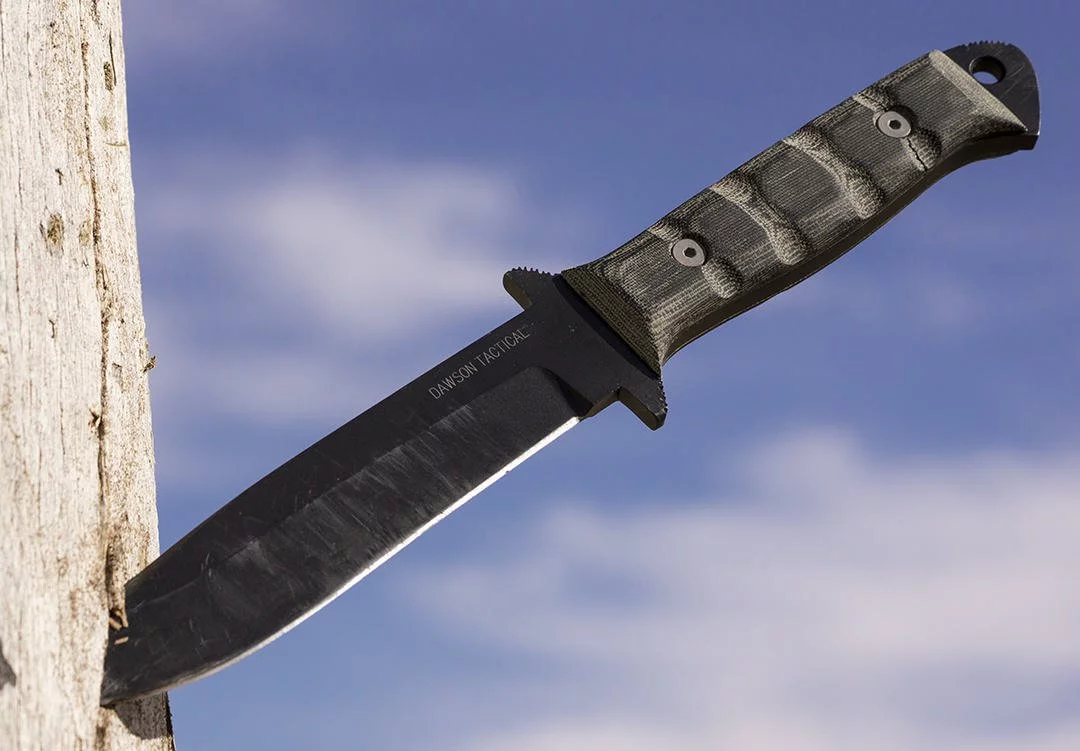
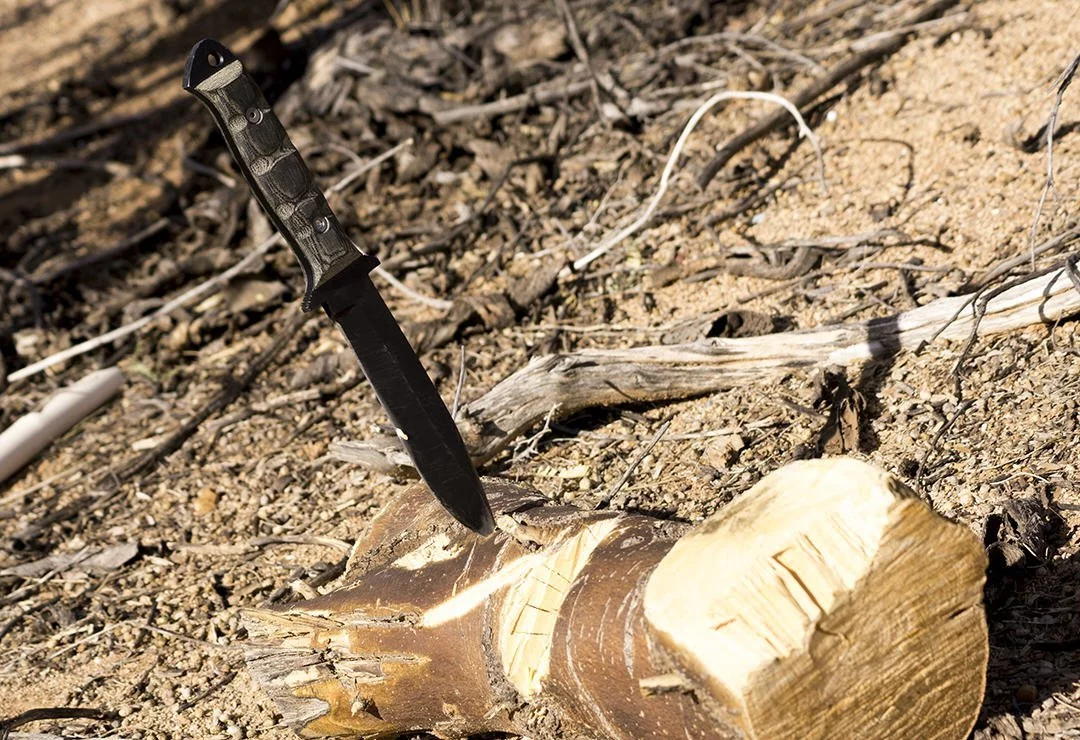

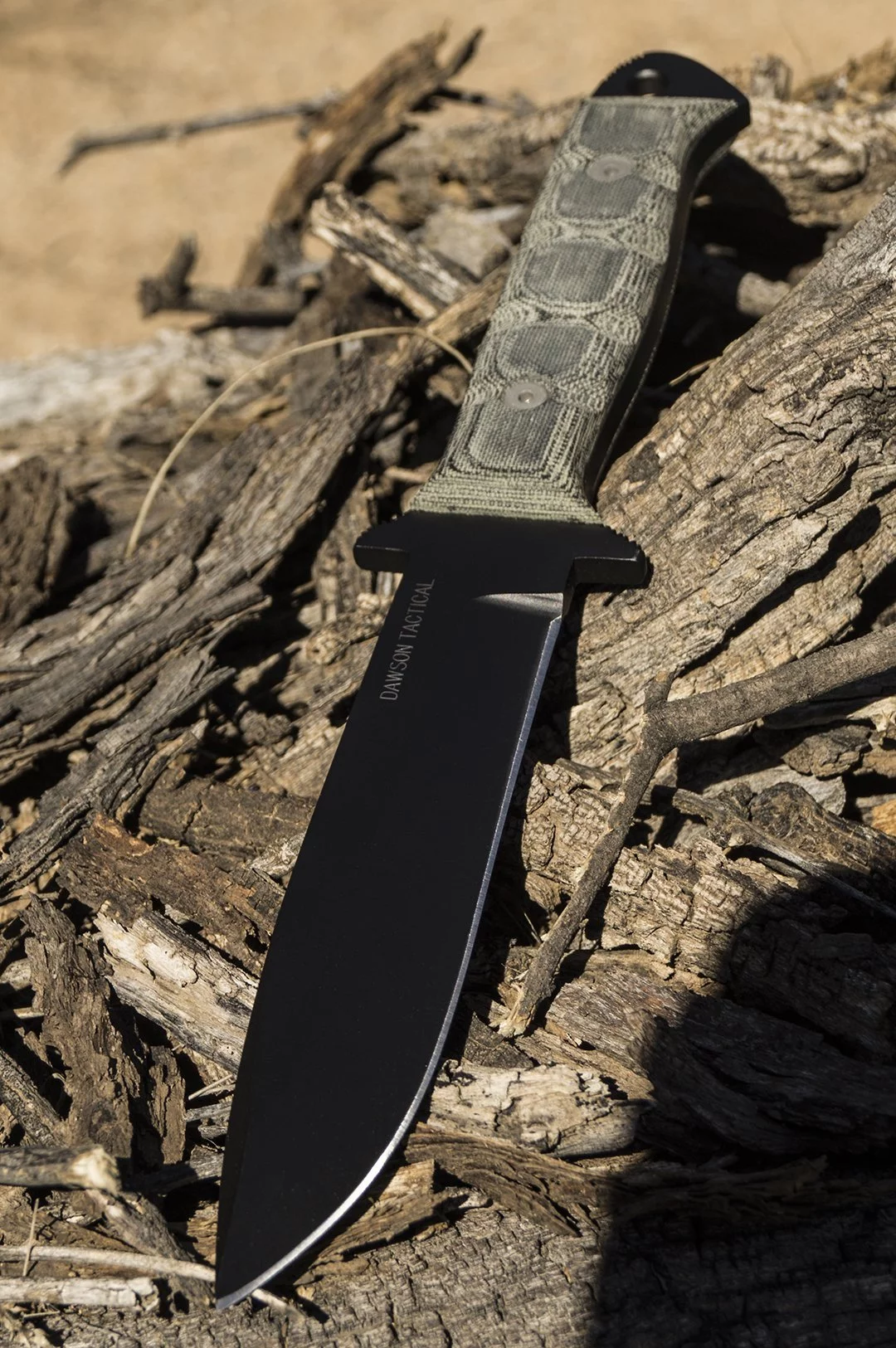
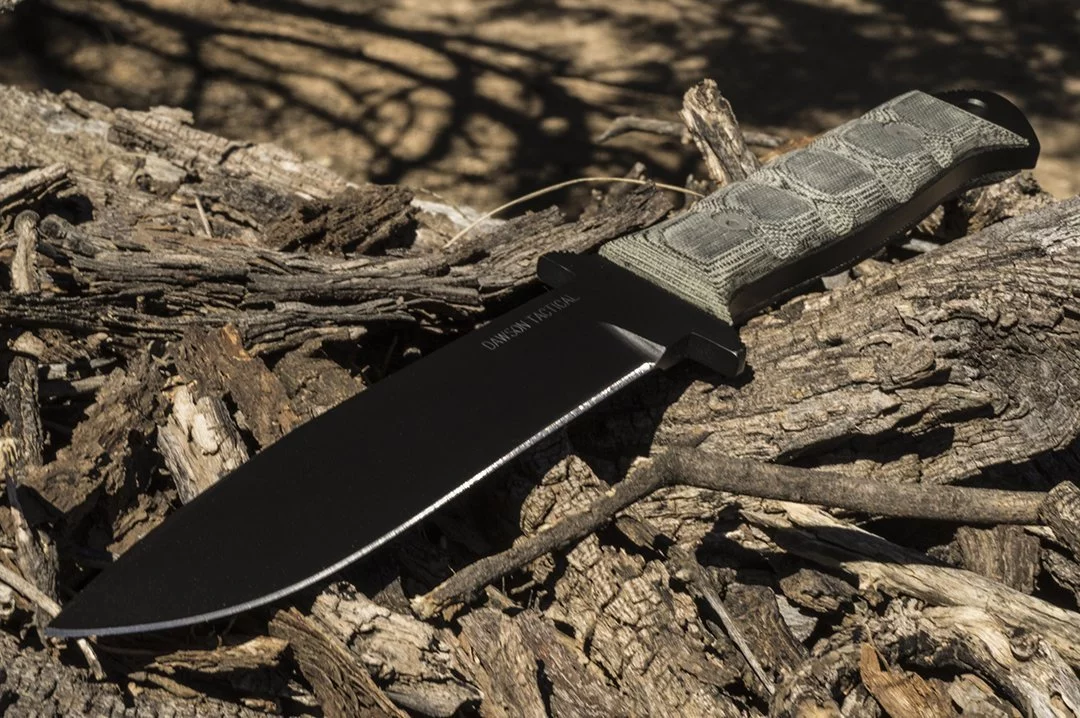
5
4.5